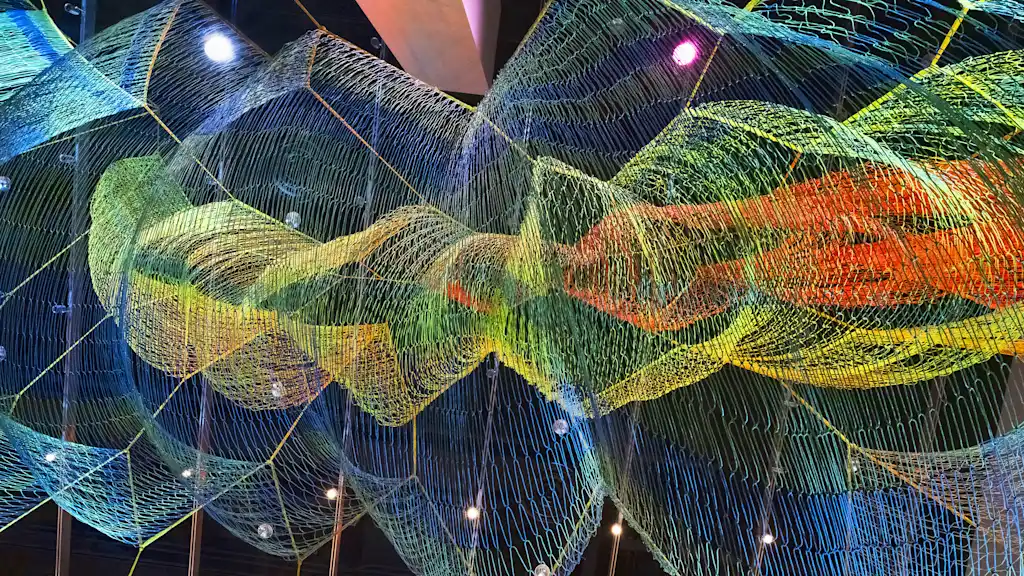
"In the lobby of the MIT Museum in Cambridge, Massachusetts, an enormous sculpture made from thousands of feet of plastic twine falls from the ceiling. It's entrancing. As you look up, your eyes take in how the fibers change color from blue to green to red to orange as it undulates across the space. While the piece looks abstract, each fiber actually has a precise meaning. The artwork was created by artist Janet Echelman is inspired by climate data guided scientists at MIT."
"Each strand of fiber represents the temperature of the planet over a period of time and the color signifies how hot it is, with blue and greens reflecting cooler climates than the reds and oranges. The sculpture goes all the way back to the ice age, but the most thought provoking part is our current moment, represented by a single yellow piece of twine."
"As you look forward, into the museum, you see a wide range of possible pathways, from a deep red representing the worse outcomes of global warming to a more hopeful future represented by blues and greens. The piece is called Remembering the Future, drawn from the Søren Kierkegaard quote, "The most painful state of being is remembering the future, particularly the one you'll never have.""
"Echelman insists that the point of this sculpture isn't data visualization. Instead, it is meant to take in the immensity of climate change without a feeling shock and paralysis. "It's meant to be contemplative," she says. "My hope is that it unleashes a sense of agency." Echelman was first inspired to use fibers to create art in her twenties, when she saw fishermen casting out large nets on beaches in Asia. She began hand-crafting large sculptures from plastic fibers that have been displayed all over the world."
An enormous sculpture of thousands of feet of colored plastic twine hangs in the MIT Museum lobby, mapping Earth's temperature history and possible futures. Each fiber corresponds to planetary temperature over time and colors indicate relative heat, with blues and greens for cooler eras and reds and oranges for hotter ones. The installation traces back to the ice age, marks the present with a single yellow strand, then fans into projected centuries showing divergent pathways depending on human action. The title Remembering the Future references Kierkegaard. The artist frames the work as contemplative, aiming to inspire agency rather than serve as strict data visualization.
Read at Fast Company
Unable to calculate read time
Collection
[
|
...
]